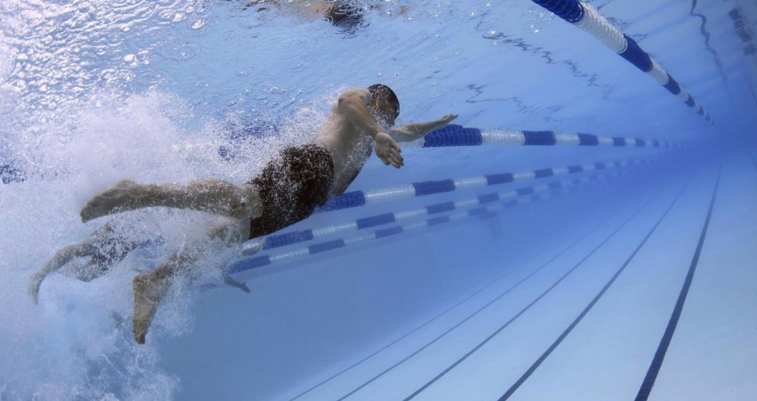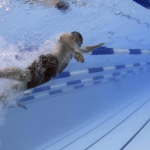Swimming is often praised as one of the most relaxing full-body workouts — but for many triathletes, that peace can quickly turn into pain. Especially after intense intervals or paddle sessions, it’s not uncommon to feel fatigue in the shoulders. But one thing that shouldn’t be part of the package is neck pain.
If you’re regularly stepping out of the pool with a stiff neck or tight shoulders, it’s time to take a closer look at your technique and routine. Here are three expert-backed tips to help you prevent neck discomfort during and after swimming.
1. Head Position: Look Down, Not Up
There’s ongoing debate among coaches and swimmers about whether you should look forward or downward while swimming. The reality? There’s no one-size-fits-all answer.
Looking forward — especially useful in open water for spotting direction — can strain your neck if overused. You’re essentially tilting your head up instead of keeping it in a neutral position.
Pro Tip: Try shifting your gaze downward toward the pool floor. This aligns your neck with your spine, relieving unnecessary tension.
If you’re forcing your head forward and experiencing stiffness afterward, your body might be signaling it’s time to change your head position.
2. Stretch It Out: Simple Moves to Relieve Tension
Neck pain often stems from tightness in surrounding muscles. That’s where mobility exercises come in — not just after, but also before you swim.
Quick Warm-Up & Cool-Down Stretches:
- Shoulder rolls (forward & backward)
- Turn your head fully side-to-side
- Drop your ear toward each shoulder
Deep Stretch: “The Armpit Look”
- Look down diagonally into one armpit.
- Let your chin move toward your chest (angled left or right).
- Use your hand (same side) to gently pull your head downward.
- Hold for 10–15 seconds, repeat 3 times per side.
💡 Bonus Relaxation Move: Slowly rotate your head in full circles — clockwise and counterclockwise — to release lingering tension.
3. Build Strength: Train What Supports You
Sometimes, pain stems not from what you’re doing wrong, but from what you haven’t done enough — and that’s strength training. Weak shoulders and upper-back muscles can overload your neck.
Start with:
- ✅ Lat Pull-Downs
- ✅ Push-Ups
- ✅ Dumbbell Shrugs (lift shoulders with a dumbbell in each hand)
Guideline: 3 sets of 8–12 reps, slowly and with control.
Don’t overload the weights — increase gradually and keep your movements smooth.
In Summary
Neck pain doesn’t have to be part of your swim. By adjusting your technique, adding targeted stretches, and incorporating gentle strength exercises, you can get back to the smooth, pain-free strokes swimming is known for.


